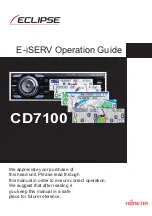
Symphony
Network terminology glossary
80
80
Router (WLAN Router)
A central network device that establishes
and manages the communication between
the network devices. Current devices
increasing combine the function of the router
with the function of an access point for
wireless data communication. These combi-
devices are often referred to as WLAN
routers.
Normally, the (WLAN) router in a network
takes on the function of the gateway to the
outside world.
Server
A network device that makes data and
services available for other devices in the
network. A UPnP-AV server stores for
example, audio and video media data and
makes this data available to other devices,
the streaming clients. Often, UPnP-AV
servers also offer functions for the
cataloguing and easy identification of medial
content according to criteria such as artist,
album name, genre, etc.
SSID
Service Set Identifier / Network name. SSID
designates the identification of a radio
network that is based on IEEE 802.11. Each
WLAN has a configurable, so-called SSID or
ESSID (Extended Service Set IDentifier), to
identify the radio network.
The SSID character string can be up to 32
characters long. It is configured in the base
station (WLAN router / Access point) of a
wireless LAN and defined on all the clients
that should have access to it. Do not use
SSID names with blanks / special characters.
UPnP-AV
Universal Plug and Play – Audio Video
Network standard that makes media content,
e.g. on PCs or NAS discs accessible in
networks. A UPnP-AV software must be
installed on PCs /NAS storage so that the
Symphony
can access the stored media
data.
Below, you will find a short overview of UPnP
software that is suitable for the different
operating systems:
Windows:
Twonky Media Server
http://www.twonkyvision.com/
Windows Media Player
11
http://www.microsoft.com/windows/windows
media/de/default.aspx
Mac:
Twonky Media Server for Mac
http://www.twonkyvision.com/
Linux:
Mediatomb
http://mediatomb.cc/
GmediaServer
http://www.gnu.org/software/gmediaserver/









































